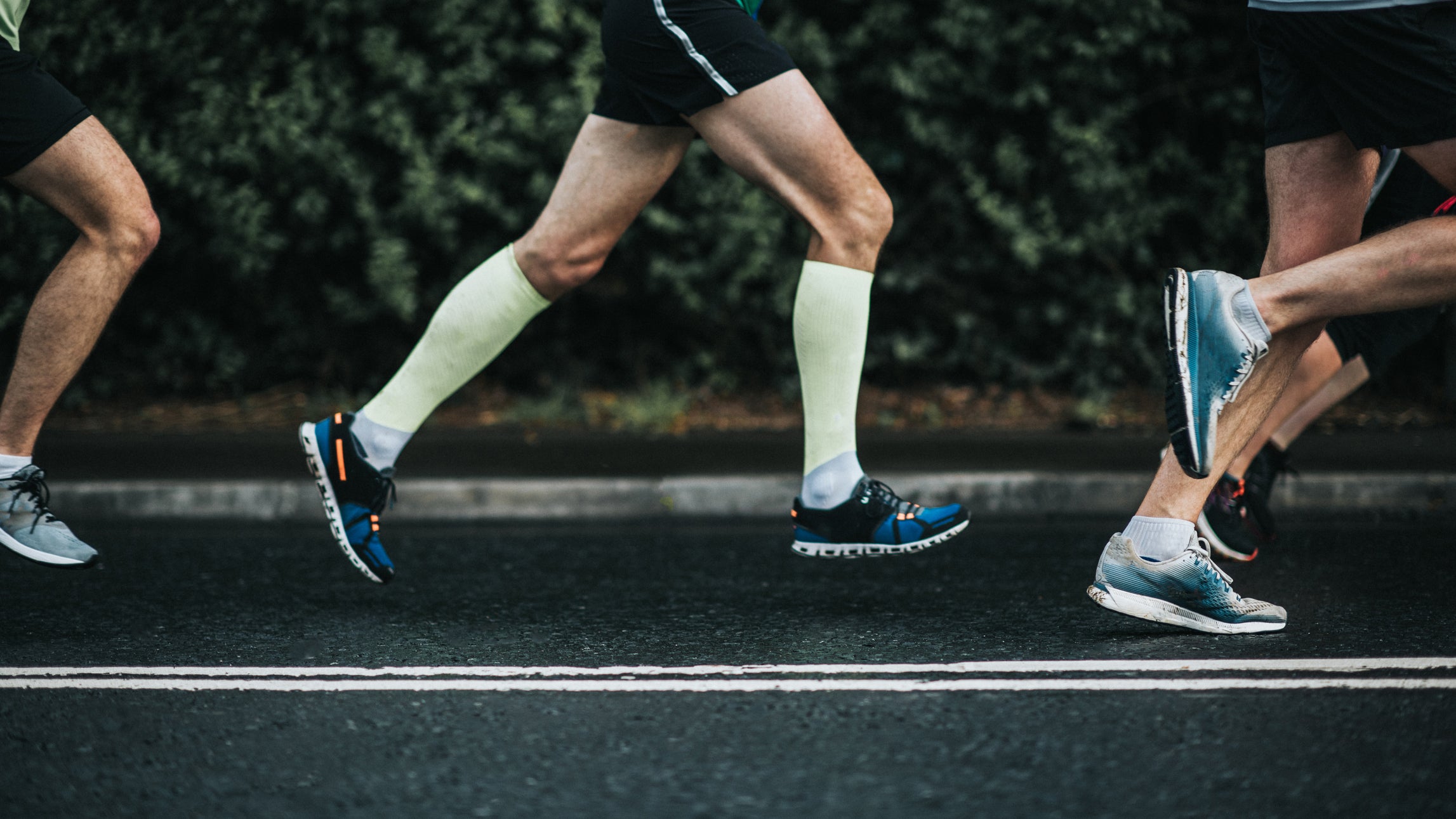What You Think You Know About Running Technique Is Wrong

When you run, your body encounters huge forces where your foot hits the ground—approximately twice your bodyweight. That means if an average triathlete weighs around 170 pounds, the force their body has to cope with is around 340 pounds. Or to be more descriptive, the ground reaction force in this example—the force exerted by the ground on your body—is the same weight as approximately 130 bottles of wine.
With all that force, you’re bound to feel the impact—which can, at times, contribute to injuries. It makes sense, then, why there’s an interest in improving running technique to minimize the impact, improving your performance and decreasing your injury risk.
Unfortunately, very little of the common technique advice is supported by sound theory, which brings into question how helpful it really is. Let’s look at the common pitfalls and what can be done about them.
The Stride Length Pitfall
Most triathletes understand that improving their stride length improves their run performance. A longer stride must mean covering more ground faster, right? And so coaching tips to “open up your stride” and “reach” are popular. Yet, there is a huge problem with this, which can in fact negatively impact your running.
When you try to increase your stride length in this way, the reaching out leg often causes your foot to strike the ground well ahead of your hips. This creates a “brake,” as your leg is angled in a way that reduces your forward running momentum. This conscious effort to increase your stride length can instead cause “overstriding,” which leads to greater energy cost and greater impact forces—and risks making your run technique and performance poorer.
The Cadence Trap
The other common piece of run technique advice triathletes are given is to focus on cadence, where coaching tips like “get your legs turning over” are prominent. But like stride length, there is a huge downfall here, which we call “over-cadence.”
When you increase your run cadence—i.e. how quickly you pick up your feet and put them back down—you will have to reduce the time your foot is on the ground. However, if this is done too excessively, we know it increases your energy cost as much if not more than overstriding. In 2015, one study found that an optimal cadence was around 85 strides per minute, and excessive cadence above that increases energy cost and uses more oxygen, hurting your run performance.
The Answer: What You Do on the Ground
The key thing that influences your stride length is how you apply force into the ground. This is where triathletes need to focus their attention when running—i.e. not what happens when your feet are in the air, but what they do when they strike the ground.
The evidence suggests that by focusing on striking your foot close to your hip, without excess cadence, your running will improve by reducing energy cost, braking forces, and impact forces. Good ground contact via foot placement and body position results in good mechanics during the rest of running gait, as everything is heavily influenced by the force the body takes and the force then created back into the ground (every reaction has an equal and opposite reaction).
The Answer: Get Stronger
Another area that any runner can improve, which will positively influence the issues outlined here, is their lower body strength.
Strength forms the foundation of what we call reactive strength. The better your reactive strength is, the more quickly you can propel yourself forward, reducing the time your foot is on the ground. But for most triathletes their reactive strength is weak, so they have to increase the time their foot is on the ground as they can’t produce force as fast, and they often end up overstriding.
To avoid overstriding requires a closer foot strike to the hips, and greater need for good hip strength. Greater strength is critical to improving run technique, and then fine-tuning it via appropriate drills and cues.
Running Technique Tips
1. Incorporate strength training 1-2 times per week, including exercises which use both hip and knee extension (i.e. split squats, hip lifts, Bulgarian squats, reverse lunges, and back squats).
2. Complement this with suitable drills based on your ability to teach your body how to make use of this strength. These can be done as a pre-run warmup (e.g. a-walk, linear hop and hold, single leg hurdle hops, a-marches, pogo drills and a-skips). But if you haven’t done sufficient strength work, then you could end up doing drills your body isn’t ready for.
3. Select simple cues to use when running—and only focus on one (at most two) at a time—to further tune this into your stride (e.g. hips tall and square, drive foot under you like on rollers, lean your torso slightly towards where you’re running with your eyes ahead, plant and ping force under you).
Dave Cripps holds a Masters degree in sport science and is an accredited strength and conditioning coach in the U.K. He’s currently the Director of TriTenacious, a leading online strength and conditioning resource for triathletes, and Coalition Performance, one of the U.K.’s most successful private physical fitness training facilities.